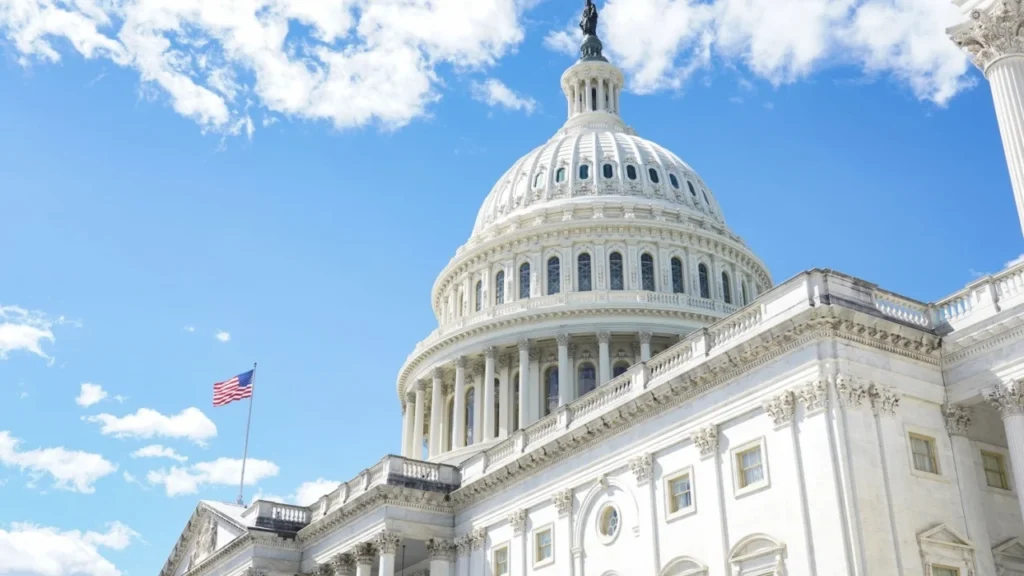Bicameral Task Force Forms to Regulate Digital Assets in the U.S.

The United States has taken a significant step toward regulating digital assets with the formation of a bicameral task force. This initiative, led by key congressional leaders, aims to develop a unified regulatory framework that fosters innovation while ensuring investor protection. With increasing global competition and evolving technology, the U.S. seeks to solidify its position as a leader in the digital finance industry.
Table of Contents
Why Digital Assets Need Regulation
The rise of digital assets has transformed the financial landscape, offering new opportunities for economic participation and financial inclusion. However, the lack of clear regulations has created uncertainty for investors, businesses, and policymakers. Without a well-defined framework, the industry risks fragmentation and potential misuse, which could hinder growth and drive innovation overseas.
Key Lawmakers Behind the Initiative
The task force is spearheaded by influential leaders, including:
- Senate Banking Committee Chairman Tim Scott (R-SC)
- Senate Agriculture Committee Chairman John Boozman (R-AR)
- House Financial Services Committee Chairman French Hill (R-AR)
- House Agriculture Committee Chairman G.T. Thompson (R-PA)
- David Sachs, White House Tech and Crypto Advisor
These policymakers recognize the importance of balancing regulatory oversight with fostering technological advancements in digital assets.
Goals of the Bicameral Task Force
The primary objectives of the task force include:
- Creating a Unified Regulatory Framework – Avoiding fragmented regulations that stifle growth.
- Encouraging Domestic Innovation – Preventing the offshoring of U.S.-led advancements.
- Enhancing Investor Protections – Ensuring fair practices and financial stability.
- Promoting Financial Inclusion – Expanding access to financial services through digital assets.
- Maintaining U.S. Leadership in Digital Finance – Competing effectively in the global market.
The Importance of a Coordinated Approach
With multiple regulatory agencies overseeing different aspects of digital assets, inconsistencies have created confusion. A coordinated effort between the Senate and House committees ensures a streamlined approach that benefits consumers, investors, and businesses alike.
Balancing Innovation and Consumer Protection
One of the biggest challenges in regulating digital assets is balancing innovation with consumer safeguards. The task force aims to:
- Prevent fraud and illicit activities.
- Establish clear rules for crypto exchanges and platforms.
- Encourage responsible adoption of blockchain technology.
- Reduce barriers for startups and entrepreneurs.
The Global Race for Digital Asset Regulation
Countries worldwide are developing their own regulations for digital assets. The European Union, China, and other major economies have implemented various policies to govern cryptocurrency and blockchain technology. If the U.S. fails to establish a clear regulatory framework, it risks losing its competitive edge in the digital finance space.
What This Means for Investors and Businesses
A well-structured regulatory framework will provide businesses and investors with:
- Greater clarity on compliance requirements.
- Enhanced security for digital transactions.
- Opportunities for responsible growth and innovation.
By fostering a supportive environment for digital assets, the U.S. can attract investment and talent while ensuring the stability of financial markets.
Scott’s Vision for the Future
Senator Tim Scott emphasized the importance of a collaborative approach, stating that the initiative is focused on helping working-class Americans by increasing financial access and reducing costs. His commitment to bipartisan cooperation highlights the significance of digital assets in shaping the future economy.
Challenges Ahead
While the initiative is a step in the right direction, challenges remain, including:
- Defining the role of government agencies in overseeing digital assets.
- Ensuring regulations do not stifle innovation or deter businesses.
- Gaining bipartisan support for legislative measures.
Public and Industry Reactions
Industry leaders and financial experts have expressed cautious optimism about the task force. Many believe that clear regulations will legitimize digital assets and encourage institutional adoption. However, concerns remain regarding excessive regulation potentially limiting growth and innovation.
Next Steps for the Task Force
The bicameral working group plans to:
- Engage with industry experts and stakeholders.
- Draft legislative proposals for regulatory clarity.
- Coordinate with federal agencies to ensure smooth implementation.
These steps will shape the future of digital assets in the U.S. and define how the country competes in the evolving global financial landscape.
Stay tuned for daily cryptocurrency news!
Conclusion
The formation of a bicameral task force marks a pivotal moment for digital assets in the United States. By establishing a comprehensive regulatory framework, lawmakers aim to protect investors, foster innovation, and maintain U.S. leadership in digital finance. As regulations take shape, the future of digital assets will depend on the ability to balance oversight with technological growth.




3 thoughts on “Bicameral Task Force Forms to Regulate Digital Assets in the U.S.”